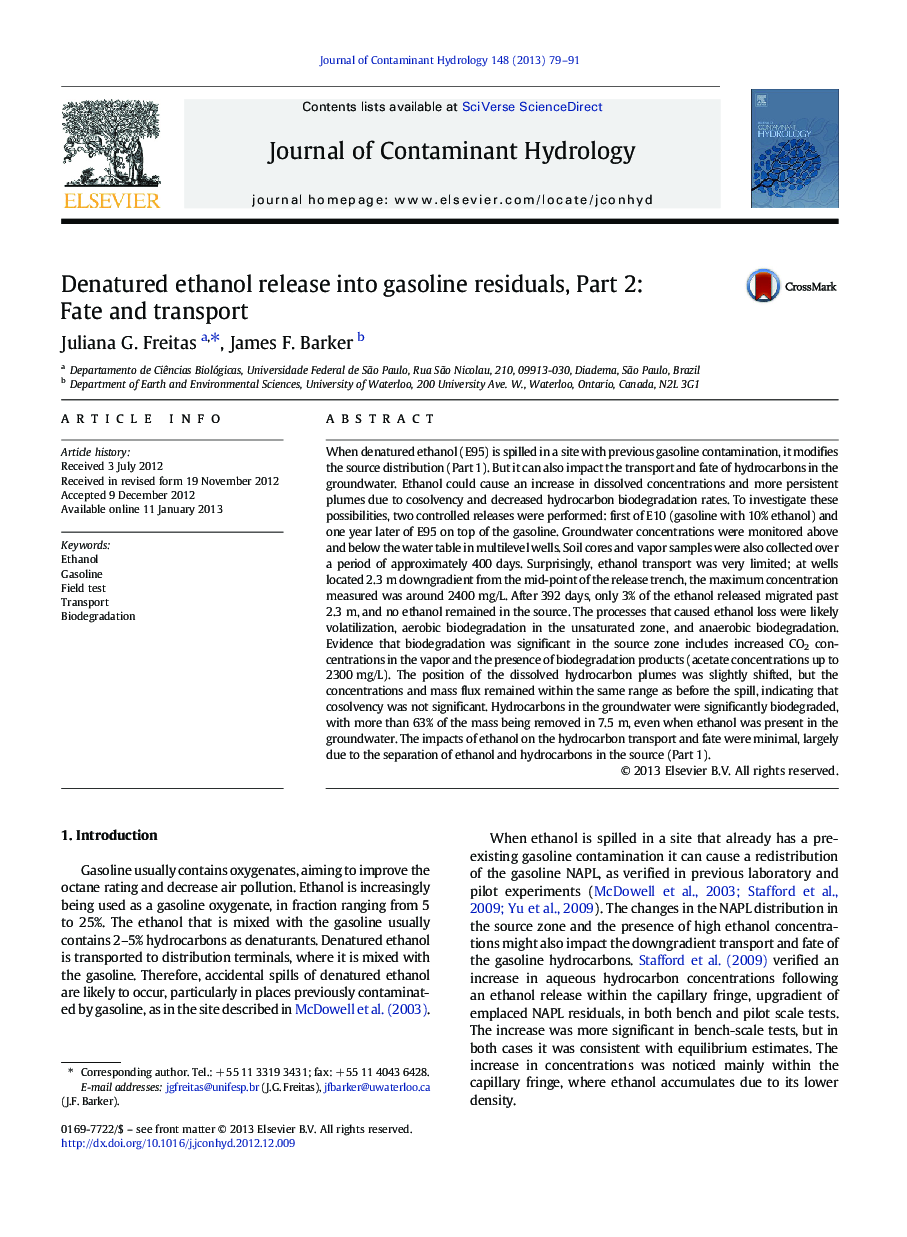| کد مقاله | کد نشریه | سال انتشار | مقاله انگلیسی | نسخه تمام متن |
|---|---|---|---|---|
| 4546770 | 1627059 | 2013 | 13 صفحه PDF | دانلود رایگان |

When denatured ethanol (E95) is spilled in a site with previous gasoline contamination, it modifies the source distribution (Part 1). But it can also impact the transport and fate of hydrocarbons in the groundwater. Ethanol could cause an increase in dissolved concentrations and more persistent plumes due to cosolvency and decreased hydrocarbon biodegradation rates. To investigate these possibilities, two controlled releases were performed: first of E10 (gasoline with 10% ethanol) and one year later of E95 on top of the gasoline. Groundwater concentrations were monitored above and below the water table in multilevel wells. Soil cores and vapor samples were also collected over a period of approximately 400 days. Surprisingly, ethanol transport was very limited; at wells located 2.3 m downgradient from the mid-point of the release trench, the maximum concentration measured was around 2400 mg/L. After 392 days, only 3% of the ethanol released migrated past 2.3 m, and no ethanol remained in the source. The processes that caused ethanol loss were likely volatilization, aerobic biodegradation in the unsaturated zone, and anaerobic biodegradation. Evidence that biodegradation was significant in the source zone includes increased CO2 concentrations in the vapor and the presence of biodegradation products (acetate concentrations up to 2300 mg/L). The position of the dissolved hydrocarbon plumes was slightly shifted, but the concentrations and mass flux remained within the same range as before the spill, indicating that cosolvency was not significant. Hydrocarbons in the groundwater were significantly biodegraded, with more than 63% of the mass being removed in 7.5 m, even when ethanol was present in the groundwater. The impacts of ethanol on the hydrocarbon transport and fate were minimal, largely due to the separation of ethanol and hydrocarbons in the source (Part 1).
► Downgradient transport of ethanol was very limited after an E95 release.
► Hydrocarbon dissolved plumes were not impacted by cosolvency effects.
► Ethanol didn't have any perceptible impact on hydrocarbon biodegradation rates.
► The minor ethanol impacts reflect the separation of ethanol from hydrocarbon in the source.
Journal: Journal of Contaminant Hydrology - Volume 148, May 2013, Pages 79–91